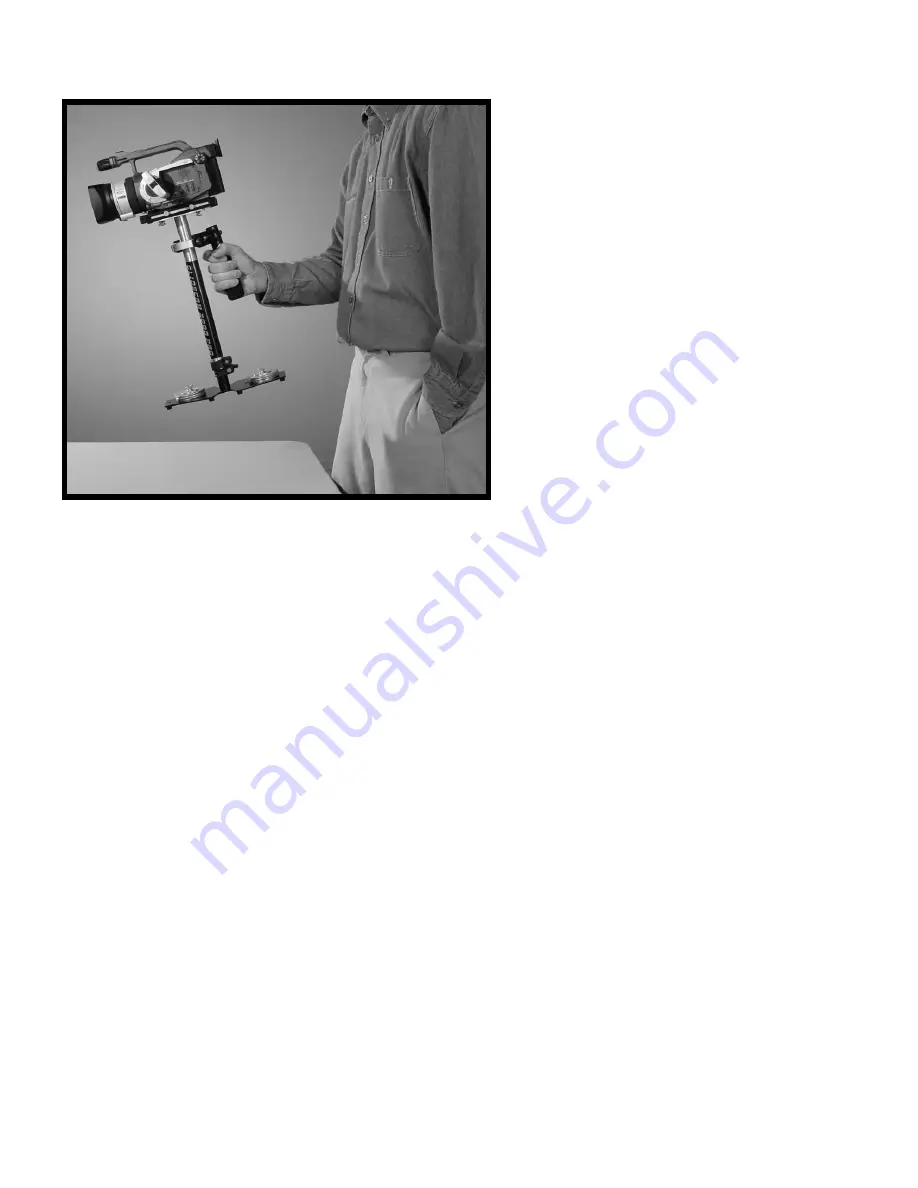
22
When testing for correct horizontal balance
you need to make sure that you pick up your
HD-2000 from a flat and level surface (a table
for example) and that you let the HD-2000
hang freely as you hold it as shown in Photo #
38. If the HD-2000 is balanced correctly on its
horizontal axis, then it will be level and upright,
with the CENTRAL POST in a virtually perfect
vertical position, as pictured in Photos # 38 and
#40.
Most likely your HD-2000 will not look like it
does in Photo # 38 and #40 and so you will
have to adjust it until it does.
WARNING: If you do not have enough
COUNTER
WEIGHTS
on
the
BASE
PLATFORM at this time, the entire Glidecam
will flip completely upside down. If this
happens add more COUNTER WEIGHTS
below until during this test the Glidecam
remains right side up.
The best way of adjusting the horizontal balance
is to move the center of gravity of the Camera.
This can be accomplished by either #1) re-
bolting the Camera to a different area of the
QUICK RELEASE PLATE, or by #2) adjusting
the position of the QUICK RELEASE PLATE
and CAMERA MOUNTING PLATE either
front to back or side to side with the Camera on
it. Method #2 is the preferred method.
If the HD-2000 tilts to the front as it does in Photo#39, then you will have to loosen the Thumb Screws on
the sides of the CAMERA MOUNTING PLATFORM and turn the adjustment knob counter clockwise. If
the HD-2000 still tilts to the front, then move the QUICK RELEASE PLATE more to the back by turning
the adjustment knob. If the HD-2000 is tilting to the back, then move the QUICK RELEASE PLATE to the
front by turning the adjustment knob clockwise. Always secure the Thumb Screws after any adjustments. If
you cannot get the front to back axis balanced with this method then try re-mounting your Camera to a
different hole on the QUICK RELEASE PLATE. Once you achieve balance for the front to back axis,
tighten the four Thumb Screws on the CAMERA MOUNTING PLATFORM.
39













































